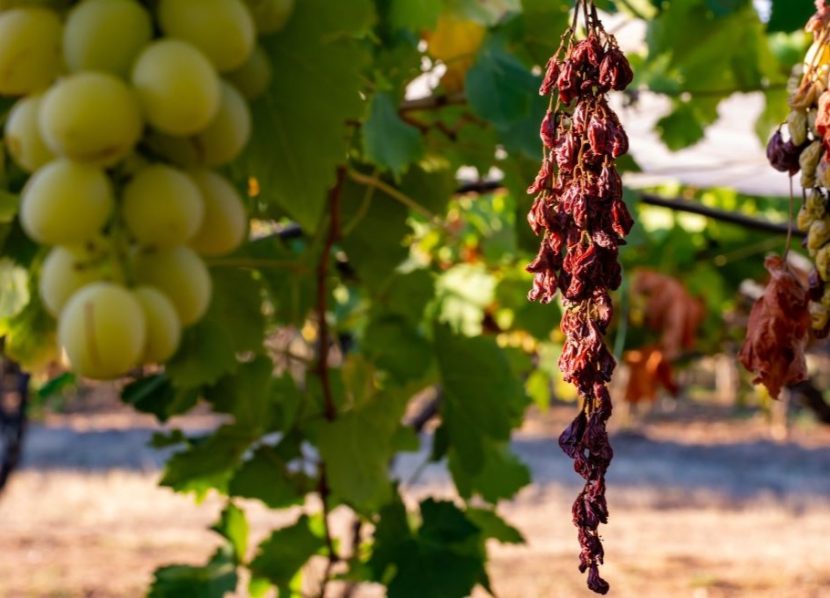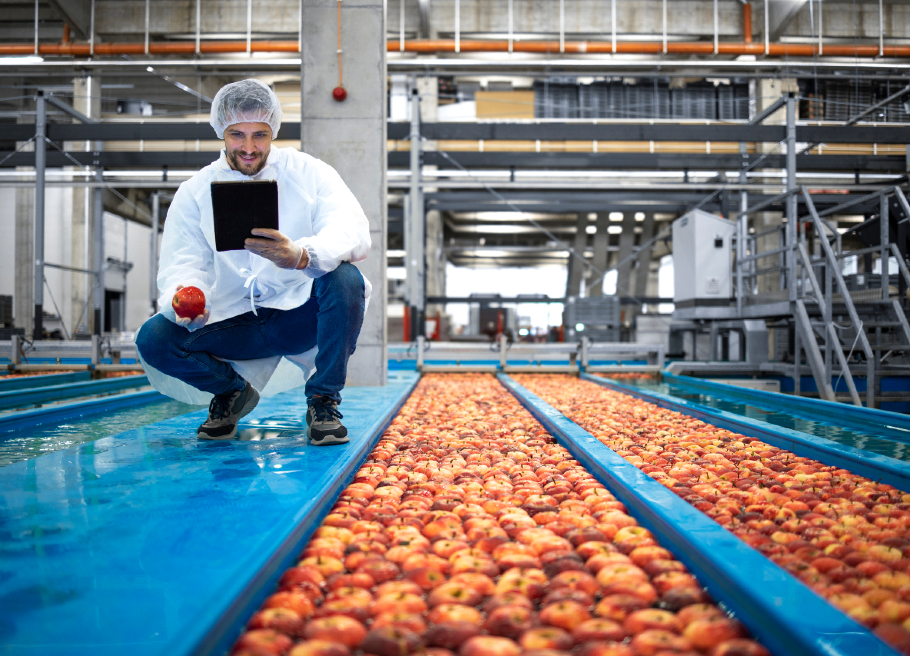Mitigating Risks to Food Safety from Climate Change
By Daphne Ewing-Chow
With 2023 being the hottest year on record, it is no surprise that foodborne illnesses have also been at an all-time high. Climate change exerts a significant influence on global food systems — and food safety — through increasing temperatures and shifting weather patterns.
The sixth assessment from the Intergovernmental Panel on Climate Change (IPCC), the United Nations’ authoritative body responsible for evaluating the evolution and impacts of climate change, reveals a growing global trend in climate-related emerging food safety risks across the agriculture and fisheries sectors.
Climate change-related fluctuations in temperature and precipitation patterns are heightening the susceptibility to insect infestation, pest outbreaks, and disease proliferation.
Climate change-related fluctuations in temperature and precipitation patterns are heightening the susceptibility to insect infestation, pest outbreaks, and disease proliferation, thereby escalating the risks to food production and safety, as well as the quality of water. These climate-related challenges are also exacerbating the likelihood of malnutrition and food insecurity.
Vulnerable populations that often lack comprehensive food safety monitoring systems, are most susceptible to these emerging risks.
Water Contamination
According to the Centers for Disease Control, waterborne diseases in the United States account for around 7.2 million cases annually, leading to hundreds of thousands of emergency department visits and thousands of fatalities. As climate change progresses, it is expected to intensify the spread and severity of these diseases, primarily due to shifts in precipitation patterns, higher temperatures, and alterations in water quality and availability.
Climate induced increased temperatures can lead to more frequent and intense rainfall events, which may overwhelm sewage systems and agricultural runoff, carrying contaminants into water sources used for irrigation and food processing and exacerbate algal blooms in bodies of water, producing toxins harmful to both aquatic life and humans. Altered precipitation patterns can also result in drought conditions, concentrating pollutants in water sources due to decreased dilution.
Contaminated water used in food production and processing can introduce pathogens and chemicals into the food supply chain, posing significant risks to food safety and public health.
Heat Stress on Poultry and Livestock
Rising temperatures and heatwaves can cause heat stress in poultry and livestock, affecting their health and productivity. Heat-stressed animals may be more susceptible to diseases, leading to food safety concerns in animal products.
The Coller Fairr Climate Risk Tool— a climate risk analysis model for the livestock industry—projects that climate-related challenges could cause worldwide poultry farming to become unprofitable by 2030, and slash profits by $23.7 billion for the 40 largest livestock companies.
Prevalence of Foodborne Pathogens and Pests
Climate change impacts on temperature, precipitation and humidity influence the proliferation and resilience of microbiological pathogens (including bacteria, viruses, parasites and fungi) as well as pests and invasive species that are detrimental to both animal and plant well-being.
According to a recent study from University of Surrey in England, researchers led by Dr. Giovanni Lo Iacono, Senior Lecturer in Biostatistics and Epidemiology at the School of Veterinary Medicine, found that the transmission of campylobacteriosis, a bacterial infection which can cause stomach pains and diarrhea is influenced by rising temperatures and humidity.
“Climate change not only has an environmental impact but has the potential to negatively affect our health by aiding the spread of infectious diseases,” said Dr. Lo lacono.
Crop Contamination
Climate impacts such as floods, hurricanes, and wildfires can contaminate crops with pollutants, heavy metals, or pathogens, compromising food safety. Floodwaters may carry sewage, chemicals, or industrial waste, contaminating fields and crops. Wildfires can spread smoke and ash, depositing harmful substances on crops.
Moreover, changes in temperature and humidity can influence the growth and spread of mycotoxins produced by molds, further contaminating crops and posing health risks to consumers.
According to a review in the journal, Foods, the escalating impact of climate change has significantly altered the prevalence of specific mycotoxigenic Fusarium species, with Fusarium graminearum contamination on the rise, particularly in northern and central Europe.
Marine Contamination
Currently, over a billion people across the globe depend on seafood as their main protein source. Climate change impacts oceans by increasing sea temperatures, leading to coral bleaching, habitat loss, and shifts in marine ecosystems. Additionally, it causes ocean acidification, which amplifies the dispersion and accumulation of toxins and contaminants within marine food webs.
According to the National Oceanic and Atmospheric Administration (NOAA), many harmful algal species in laboratory conditions tend to generate increased toxin levels and experience faster blooming in acidified waters. Such a corresponding reaction in natural settings may endanger individuals consuming contaminated shellfish and result in sickness among fish and marine mammals.
Warmer sea surface temperatures are likely to elevate mercury levels in seafood, while more frequent extreme weather events could introduce pollutants into the food chain through runoff from storms.
Following the largest global occurrence of a significant urban fire burning adjacent to a coral reef, which occurred in Maui in 2023, state officials have been advising the public to minimize their consumption of seafood until researchers can ascertain whether toxic debris could potentially infiltrate the food chain.
Strategies to Mitigate Climate-Related Food Safety Risks
From altering precipitation patterns to exacerbating the spread of foodborne pathogens, climate impacts permeate every step of the food supply chain. Addressing the impacts of climate change on food safety thus requires coordinated efforts across agriculture, public health, food industry, and policymaking. Strategies such as implementing climate-resilient agricultural practices, improving water management systems, enhancing food safety regulations and surveillance, and promoting sustainable food production and distribution systems can help mitigate these risks.
From a policy perspective, a critical consideration is that strategies to mitigate food safety risks can also exacerbate negative environmental impacts.
For instance, increased use of chemical pesticides and antimicrobials to control foodborne pathogens can lead to soil and water contamination. Similarly, intensive farming practices aimed at reducing contamination risks, such as monocropping and excessive fertilizer use, can degrade soil quality, contribute to nutrient runoff, and exacerbate water pollution. Furthermore, reliance on energy-intensive technologies for food processing and transportation may result in higher greenhouse gas emissions, exacerbating climate change and its associated environmental consequences.
Overall, while efforts to improve food safety are crucial, careful consideration of their environmental implications is essential to avoid further unintended harm to ecosystems and natural resources. By addressing the root causes of climate change and implementing adaptive strategies, we can safeguard food security and protect the health of both people and the planet.
About the Author
Daphne Ewing-Chow, is a food and agriculture writer who has contributed to the global discourse on food systems and environmental issues. As a contributor to publications such as Forbes, The New York Times and Entrepreneur Magazine, her perspectives on food security and sustainability have captivated audiences worldwide, earning her accolades institutions such as the United Nations and the Caribbean Broadcasting Union.

-
 FeaturedRisk management
The Cost of a Breach: What a Cyberattack Could Mean for Food Safety Recalls
FeaturedRisk management
The Cost of a Breach: What a Cyberattack Could Mean for Food Safety Recalls
-
 FeaturedRisk management
Securing the Food Chain: How ISO/IEC 27001 Strengthens Cybersecurity
FeaturedRisk management
Securing the Food Chain: How ISO/IEC 27001 Strengthens Cybersecurity
-
 FeaturedRisk management
Revolutionizing Food Safety Training: Breaking Out of the “Check-the-Box” Mentality
FeaturedRisk management
Revolutionizing Food Safety Training: Breaking Out of the “Check-the-Box” Mentality
-
 GFSI Standards
GFSI 2025: Building Trust, Tech-Forward Solutions, and Global Unity in Food Safety
GFSI Standards
GFSI 2025: Building Trust, Tech-Forward Solutions, and Global Unity in Food Safety
-
 FeaturedFood Safety
Integrated Pest Management: Strategies to Protect Your Brand’s Reputation
FeaturedFood Safety
Integrated Pest Management: Strategies to Protect Your Brand’s Reputation
-
 FeaturedFood Safety Culture & Training
No Open Door Policy: Challenges That Impact Pest Control in Food Processing Plants
FeaturedFood Safety Culture & Training
No Open Door Policy: Challenges That Impact Pest Control in Food Processing Plants




